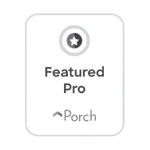When we refinish or install a hardwood floor (or any other floor), it is important that we replace the baseboard molding. So, base shoe vs quarter round? They are almost interchangeable types of this essential trim piece that can cover essential gaps between floors and walls with an elegant design detail for your home’s décor needs! So, what’s the difference?
Base Shoe Vs. Quarter Round: Do I Actually Need Them?
Get rid of the old base shoe before installing a new floor. If you don’t, it may be dented or damaged and have several layers of paint on it from years past- not good! Even more importantly than this though: removing your old worn out shoes will allow us to butt up against any walls in order for them fit properly when we’re installing or sanding along edges; preventing significant damage if refinishing an entire room (which many people do).
One of the most common questions people ask is if they really need the base shoe, or just some kind of add-on. The answer? Yes! Without one, there will usually be a gap between your flooring and trim that’s not only unattractive but makes it easy for dirt/debris accumulation under this area as well because anything can get stuck in here without being seen until its too late. Midwest Flooring Company offers you choices depending on preference; if you want us to remove your old worn down base shoe then we’ll replace it with what belongs by installing new base shoe or quarter round trim molding. However, you could elect to paint and install this yourself if you are experienced or a handy DIY-er.
Base Shoe – Shoe Moulding
Paired with a baseboard and painted to match, shoe molding (also called “base shoe”) is an easy way to cover up your seams. This thin strip of moulding can often be found in the shape or round like quarter-round but it differs from this because you may find taller forms as well, not always a perfect “quarter round” circle.
Quarter Round
Quarter round is a moulding style typically paired with baseboards to cover up gaps and imperfections between the floor. It essentially has the same purpose as shoe molding, which means it’s always shaped like a quarter circle but can come in different sizes for your convenience! The sleek curve at its edge makes this countertop-facing sideboard look professional without being too formal or stuffy – something everyone needs from time to time when they’re trying out new homes on their own terms.
Should The Base Shoe Be The Same Color as Your Trim Or The Floor?
This is a question of personal preference. In general, the base color of the shoe should match the trim color, but it is ultimately up to you. We recommend contrasting your hardwood floor’s beautiful stain color by matching it with your trim color.
Materials – Wood Or MDF Base Shoe?
Base shoe moulding is the only crown molding material that has a flat face. It is used to cover gaps and fill in holes or seams between different types of flooring, such as tile, laminate or hardwood floors. The type of base shoe you choose will be dependent on your decorating taste, since there are many to choose from. Base shoe is typically made of plastic or wood and is available in a variety of colors and finishes to match your decorating style.
Wood Trim – Base Shoe vs Quarter Round
Wood is a popular and popular choice among homeowners. The aesthetic appeal of natural woodgrain is exquisite. It’s 100% renewable and a long-term resource. It rarely cracks or warps once it’s put in place, too.
However, this material is known for having natural flaws, which means it won’t always appear smooth and clean, but it is much more durable and resistant to dents. We will always install solid wood trim unless otherwise requested by homeowners.
MDF Trim
For a reason, MDF (medium-density fiberboard) is becoming increasingly popular among designers, contractors, and homeowners. It’s extremely adaptable, so it may be utilized in a variety of rooms in the house, including baseboards and moldings.
It also has a smooth surface with no natural flaws. It’s often primed, making it simple to paint. Furthermore, it does not split, making installation easier. MDF is the most cost-effective material on the market, and it’s also beautiful and luxurious. However, it may be dent easily as it is much softer than solid hardwood trim.











